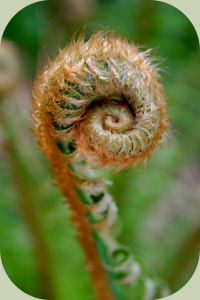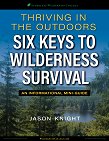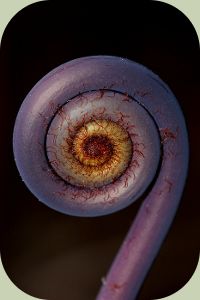Fiddlehead Ferns:
Springtime Edible Treats

Of all the wild edible plants, fiddlehead ferns are some of the most unique and flavorful. Fiddleheads are the unfurled new leaves of a fern. They vary in size, shape and edibility from species to species.
What Types of Fiddlehead Ferns Are Good to Eat?
If you look into a local field guide on plants of your region, chances are you have several species of ferns that show up in your region. The term "fiddlehead ferns" is a general description of any number of species, which might include Lady fern (Athyrium filix-femina), Ostricth fern (Matteuccia struthiopteris), shield fern (Dryopteris dilatata), and Bracken fern (Pteridium aquilinum).
Some scientists believe that Bracken fern (Pteridium aquilinum) may be linked to higher incidences of stomach cancer, especially in some areas where large quantities of this plant are consumed. Although this is one of the most widespread and common species throughout the northern hemisphere, it should be consumed with caution, if at all.
No evidence of carcinogens is currently known in other edible fern species. As with all wild foods, however, it is best to eat them in moderation, especially initially.
When to Gather?
Fiddleheads are generally gathered in early spring time. They are also occasionally found in their prime for harvesting during the fall time in the Pacific Northwest region of the USA. The best time to collect varies from region to region, year to year and species to species. In the Pacific Northwest, the best time generally falls around the month of March.
Collect them when they are still tightly curled as they quickly become less palatable as they unfurl. Also, remove any of the brown, papery chaff from them outside. The most effective way to remove the chaff is by rubbing gently with the hands. Washing in cold water can also help.
Be More Prepared For Your Next Outdoor Adventure!

Don't leave home without knowing these six essential survival skills. Our free survival mini guide reveals the strategies of:
- Shelter & fire to prevent the number one cause of death
- Obtaining clean water to avoid life-threatening dehydration
- Common wild survival foods and other critical skills!

Where to Gather?
The exact locations where the various fern species will show up is best determined by noting where the mature fern fronds can be observed during the summer time. Generally, ferns grow in areas where there are soils along wetlands, stream banks, moist woods or forest edges.
How to Eat Ferns
There is a wide range of ways in which to cook and enjoy these wild edibles. They can be eaten steamed, boiled, in soups, sautéed or stir-fried, fried or baked. A classic way to cook and serve them is sautéed with just some butter or oil and seasoning. This is a great way to try them for the first time. Also, you could try them cooked with bacon and/or garlic and wild mushrooms. They are also great on pizza, in scrambles, spaghetti sauce and casseroles.
Make sure to cook them thoroughly, as uncooked fiddleheads contain thiaminase which is a vitamin B depleting enzyme. Heat destroys this enzyme and makes the them safe to eat.
By the way, when you're out foraging, it's important to know how to stay safe in the outdoors, especially if you were to get lost. Right now you can get a free copy of our mini survival guide here, where you'll discover six key strategies for outdoor emergencies, plus often-overlooked survival tips.
References: Pojar 1994, Moore 1993, Schofield 2003.
Additional Resources:

Related Courses:
Wild Edible & Medicinal Plants Courses

About the Author: Filip Tkaczyk is a periodic guest teacher at Alderleaf. He also wrote the field guide Tracks & Sign of Reptiles & Amphibians. Learn more about Filip Tkaczyk.
Return from Fiddlehead Ferns to Wild Plants Articles
Is The Essential Wilderness Survival Skills Course Right for You? Take the "Online Survival Training Readiness" Quiz
See for yourself if this eye-opening course is a good fit for you. It takes just a few minutes! Get your Survival Training Readiness Score Now!

Grow Your Outdoor Skills! Get monthly updates on new wilderness skills, upcoming courses, and special opportunities. Join the free Alderleaf eNews and as a welcome gift you'll get a copy of our Mini Survival Guide.

 The Six Keys to Survival: Get a free copy of our survival mini-guide and monthly tips!
The Six Keys to Survival: Get a free copy of our survival mini-guide and monthly tips!
Learn more